Last Updated on December 25, 2023 by Matt Musico
Between 1927 and 1997, MLB’s single-season home run record changed hands exactly once. It went from Babe Ruth to Roger Maris. Between 1998 and 2001, this record changed hands twice. Mark McGwire first broke the record before Barry Bonds surpassed him shortly after. But what about the rest of MLB’s single-season home run leaders? There have been many impressive seasons over the past two-plus decades, and they must be recognized. Below, we’ll detail the most home runs in a season in MLB history. There are a few ties thrown in for good measure because…why not, right?
If you’re interested in seeing how the following seasons rank for each club, check out our MLB home run leaderboards for every team.
Want to see some homers in person this season? Of course you do. Grab MLB tickets from our friends at Vivid Seats. And before you get to the stadium, make sure you’re decked out in the right gear. Get your favorite team’s official merch from the MLB Shop or a ‘Big Dinger Energy’ shirt from our apparel store.
Most Home Runs in a Season: The Top 11
Barry Bonds, 2001: 73 Home Runs
Yes, I’m aware of the implications PEDs may have had on Barry Bonds’ record-breaking 2001 season. We’re not here to talk about that. We’re here to talk about the video game numbers he put together in real life.
In 664 plate appearances, Bonds hit 73 home runs and collected 137 RBI while scoring 129 on his own. This was accompanied by an outrageous .328/.515/.863 line, a 26.7% walk rate, and a 14.0% strikeout rate. This led to an equally ridiculous 235 wRC+ and 12.5 fWAR. It was his first of two consecutive years posting a wRC+ of at least 230 and 12.0-plus fWAR. Bonds was so good that he nearly had 40 homers by the All-Star break.
Let’s put his season-long performance in perspective, though. There have been 10 different seasons with a player producing at least 12.0 fWAR in baseball history. Bonds has done it twice. He’s the only player not named Babe Ruth, Lou Gehrig, or Rogers Hornsby to be on this list. That’s insane. And yes, his 73 homers are an outlier since he never hit more than 49 in any other season. But it’s not like he wasn’t already a prolific home run hitter. This performance came in the midst of a 14-year span where he hit at least 33 homers per season.
Mark McGwire, 1998: 70 Homers
As we’ll see, Mark McGwire’s 70-homer performance for the Cardinals was easily the best season of his career. He produced 8.5 fWAR during this campaign, and he produced more than 7.0 fWAR just one other time (7.3 in 1996 with Oakland). In addition to leading baseball in home runs, he also led the league in walks (162), on-base percentage (.470), slugging percentage (.752), OPS (1.222), and OPS+ (216).
When looking at the seasons surrounding 1998, it’s crazy the number of homers he hit. Over a four-year span from 1996 through 1999, McGwire never hit fewer than 50 homers, leading the league on three occasions. He hit an incredible 245 dingers during this span, accounting for approximately 42.0% of the 583 homers he slugged during his career. If you’re going to be on the most home runs in a season list, you might as well do it right. While it’s not surprising that McGwire is among MLB’s Home Run Derby winners, he didn’t do it in 1998 — it happened in 1992.
What’s also interesting is how quickly things can change. After hitting 70 homers in 1998 and another 65 in 1999, it didn’t look like he was slowing down. While he hit 29 home runs and posted a .808 OPS in 97 games in 2001, he was out of the game the following year. A .187 average, 104 wRC+, and a 32.4% strikeout rate will do that, I suppose.
Sammy Sosa, 1998: 66 Homers
The PED implications aren’t anything to scoff at, but where would baseball be today if Sammy Sosa didn’t join the great home run chase? It’s something that brought many fans back after MLB’s 1994 strike. Prior to Sosa’s historic campaign, he had already broken out for the Chicago Cubs. Between 1993 and 1997, he collected four seasons of 30-plus homers and three years of at least 100 RBI.
But still, his production was head-and-shoulders above anything he did before as a pro ballplayer. Just looking at his progression from 1997 to 1998 is eye-opening. He slugged 36 home runs with 119 RBI, 90 runs scored, and 22 stolen bases. However, his performance was worth just 2.5 fWAR based on a .779 OPS and a 93 wRC+. In 1998, he slugged 66 homers with 158 RBI, 134 runs scored, and 18 stolen bases. However, it was everything else that really made this a historic breakout for him. His performance was worth 7.1 fWAR off the strength of a 1.024 OPS, a 159 wRC+, and a .425 wOBA.
This NL MVP campaign began a stretch of five straight years in which he accumulated at least 5.0 fWAR.
Mark McGwire, 1999: 65 Home Runs
How do you follow up a record-breaking season like the one McGwire had in 1998? Well, you hit another 65 homers to lead the league for a second straight year. Big Mac also posted a league-leading 147 RBI and a 177 OPS+, which led to his third career top-five finish in MVP voting. He appeared in his 11th All-Star Game, too.
His first-half performance was impressive, which included a 1.027 OPS with 28 homers and 72 RBI in 370 plate appearances. However, it was what he did after the midsummer classic that was truly incredible. Despite getting 79 fewer plate appearances, McGwire posted a 1.236 OPS with 37 home runs and 75 RBI. After not hitting more than 10 homers in a month through the end of June, he hit at least 12 in a month between July and September.
Sammy Sosa, 2001: 64 Homers
Ah, yes, another season of 60-plus homers for Sosa. This was also another occurrence where he didn’t hit the most home runs in a season because of another slugger’s record-breaking performance. When looking at Sosa’s peak with the Cubs, his 2001 campaign was the peak of the peak, so to speak (I’m not apologizing for that). This was the fourth consecutive year in which he finished with an OPS above 1.000. The 1.174 mark he produced ended up being his best. He did that off the strength of a .328/.437/.737 line to go along with those 64 home runs, 160 RBI, 186 wRC+, and a career-high 9.9 fWAR.
He made sure to give the crowd at Wrigley plenty to cheer about, too. In 346 plate appearances at the friendly confines, he slashed .335/.431/.765 with 34 homers and 85 RBI. Obviously, it’s not as if he only did damage at home. His home OPS (1.196) and road OPS (1.153) were nearly identical, while his OPS+ actually was identical (205 for each).
Sammy Sosa, 1999: 63 Homers
So, I knew Sosa had an incredible prime, but it was really incredible. After winning his one and only MVP award the year prior, he hit another 63 homers with 141 RBI, a 1.002 OPS, and a 143 wRC+. It was his second of four consecutive seasons of 50-plus homers, and this streak would’ve been five straight if he hit one more homer in 2002. He finished that year with a league-leading 49 taters.
What’s crazy is Sosa entered May having hit just four home runs while collecting 11 RBI with a pedestrian .253/.330/.481 line. He proceeded to hit 26 home runs over the next two months (13 in May and 13 in June). So, maybe Sosa was feeling a little bit of the pressure during a slow(er) start, but he made up for it with one of his most productive seasons ever, which ended with 5.3 fWAR.
Related: A Team-By-Team Look at All 40 Home Runs Seasons
Aaron Judge, 2022: 62 Home Runs
Aaron Judge has put together possibly one of the most dominant contract years ever, and it’s been one of the most powerful displays we’ve seen in quite a while. The last time someone hit this many homers in a season, it was Judge’s teammate, Giancarlo Stanton, in 2017 when he hit 59 dingers.
These two got to their respective numbers in very different ways. For Stanton, he had just two months of double-digit homers (July and August). In those two months, 30 of his 59 dingers we hit.
Judge has been much more consistent. Once he passed Roger Maris’ Yankees franchise record, September became his fourth month with double-digit homers. His lowest total in a full month was six in April. Since then, he hasn’t hit fewer than nine.
The slugging outfielder collected his 58th and 59th home runs in Milwaukee on September 18th. That marked the 11th time he’s enjoyed a multi-homer performance in 2022. He had six such games in 2021 and seven performances like this during his 2017 Rookie of the Year campaign.
Roger Maris, 1961: 61 Home Runs
Roger Maris is mostly known for the 61 homers he hit in 1961 to break Ruth’s long-standing record. That campaign stands out as his best in a number of metrics, but he enjoyed a solid stretch from 1960-64 with the New York Yankees. He was worth at least 3.4 fWAR in each campaign (including two 7.0-plus years). He also enjoyed five straight 20-plus homer seasons and three years of at least 100 RBI.
This peak from Maris included two straight MVP awards, with his first coming in 1960. So, he came back from earning that accolade and outdid himself by becoming the single-season home run king. Even with the short porch in right field at the Old Yankee Stadium, Maris essentially split his homer production down the middle. He hit 30 at home and 31 on the road.
It’s likely nobody expected him to do this as the calendar flipped from April to May. That’s mostly because, in the 15 games he played through the first month, he struggled to a .614 OPS, including just one dinger. He then hit double-digit home runs each month for the rest of the season. Maris’ high came in June (15) and his low came in September (10).
Babe Ruth, 1927: 60 Homers
Babe Ruth hit the most home runs in a season 12 times. His 60-homer performance in 1927 was the eighth time he accomplished that feat. It was also the second in a streak of six consecutive years where nobody out-performed him.
If you look at the single-season home run leaders for 1927, Ruth was in a league by himself. Teammate Lou Gehrig came in a rather distant second with 47 dingers of his own. The rest of the top five was rounded out with a tie between Cy Williams and Hack Wilson at 30, and Rogers Hornsby at 26.
Of course, Ruth was an anchor for one of the greatest teams ever, and he performed that way. Through 691 plate appearances, he slashed .356/.486/.772 with 60 homers, 165 RBI, and 158 runs scored. He led the league in on-base percentage, slugging percentage, OPS, homers, runs scored, OPS+ (225), and walks drawn (137). There were four times during Ruth’s career when he produced consecutive seasons with at least 10.0 fWAR. The only time he did it for more than two years in a row was from 1926-28 (12.0, 13.0, 10.6).
Babe Ruth (1921), Giancarlo Stanton (2017): 59 Home Runs
One quick note about Ruth before I spend some time drooling over what Giancarlo Stanton did…
Remember when I talked about how much of a disparity there was in 1927 between Ruth and the rest of the field? Well, it was even wider in 1921. Ruth finished with 59 homers, and the second closest was Bob Meusel and Ken Williams, who both hit 24. Ruth was just in another stratosphere.
As for Stanton he finally put it all together in 2017. He stayed healthy enough to clobber baseballs for an entire season, and he was rewarded with the NL MVP award. This was notable because while he also led baseball with 132 RBI, he posted a league-leading (and career-best) .631 slugging percentage with a 23.6% strikeout rate. Those numbers were easily the lowest of his career. What really made this season special for Stanton was his August rampage.
Through 127 plate appearances, Stanton slashed .349/.433/.899 with 18 home runs and 37 RBI, which sussed out to a 232 wRC+. One of the kings of hard contact and exit velocity was on his game during this month, too. He paired a 50.6% fly-ball rate with a 46.8% pull rate and a 45.6% hard-hit rate.
Jimmie Foxx (1932), Hank Greenberg (1938), Ryan Howard (2006), Mark McGwire (1997): 58 Homers
Since we’ve got a four-way tie, I’ll share one interesting nugget for each.
When it came to scoring and producing runs, nobody was better than Jimmie Foxx in 1932 for the Athletics. He not only led baseball with 58 homers, but he also led the league in RBI (169) and runs scored (151). Mind you, this was in a 154-game season. He won his first of three MVP awards, and he’d go on to win it again in 1933. That included him taking home the triple crown (.356 average, 48 homers, 163 RBI).
Hank Greenberg knew how to drive in runs for the Detroit Tigers. Fresh off a season in which he led baseball with 184 RBI, he followed that with a single-season career-high mark for homers with 58 taters. He produced 7.8 fWAR during this campaign. It was his second of four in a row where he posted at least 5.9 before serving in World War II.
Ryan Howard needed just 88 games to secure 2005 NL Rookie of the Year honors. His first full big-league season came in 2006 with the Phillies, which yielded 58 homers, 149 RBI, and NL MVP honors. This was the start of six consecutive seasons of 30-plus homers. However, he’d never post a better batting average (.313), on-base percentage (.425), slugging percentage (.659), or wRC+ (162) in his career.
The 1997 season was the calm before the storm for Mark McGwire. I love looking at his build-up to ‘98 by looking at his home run progression since 1995: 39, 52, 58, 70. He was traded from Oakland to St. Louis in the middle of this season, and he didn’t lose his power stroke. In just 51 games with the Cardinals, Big Mac slugged 24 home runs.
Most Home Runs in a Season: The Rest
There have been a total of 48 different seasons with a player slugging 50-plus home runs. We’ve detailed the very top of this leaderboard above, but here are all the other 50-homer campaigns in MLB history.
- Alex Rodriguez, 2002: 57
- Luis Gonzalez, 2001: 57
- Ken Griffey Jr., 1997 and 1998: 56
- Hack Wilson, 1930: 56
- Matt Olson, 2023: 54
- Babe Ruth, 1920 and 1928: 54
- Mickey Mantle, 1961: 54
- Alex Rodriguez, 2007: 54
- Ralph Kiner, 1949: 54
- Jose Bautista, 2010: 54
- David Ortiz, 2006: 54
- Chris Davis, 2013: 53
- Pete Alonso, 2019: 53
- Mickey Mantle, 1956: 52
- Willie Mays, 1965: 52
- George Foster, 1977: 52
- Aaron Judge, 2017: 52
- Alex Rodriguez, 2001: 52
- Mark McGwire, 1996: 52
- Jim Thome, 2002: 52
- Willie Mays, 1955: 51
- Ralph Kiner, 1947: 51
- Andruw Jones, 2005: 51
- Johnny Mize, 1947: 51
- Cecil Fielder, 1990: 51
- Jimmie Foxx, 1938: 50
- Albert Belle, 1995: 50
- Brady Anderson, 1996: 50
- Sammy Sosa: 2000: 50
- Greg Vaughn, 1998: 50
- Prince Fielder, 2007: 50
Want to see some homers in person this season? Of course you do. Grab MLB tickets from our friends at Vivid Seats. And before you get to the stadium, make sure you’re decked out in the right gear. Get your favorite team’s official merch from the MLB Shop or a ‘Big Dinger Energy’ shirt from our apparel store.
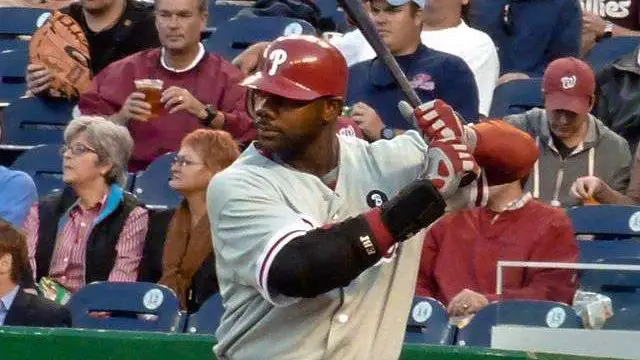
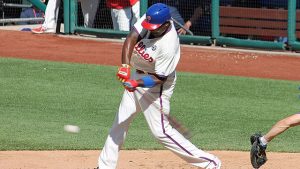
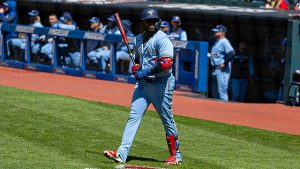
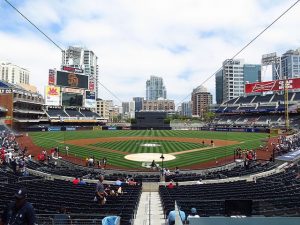
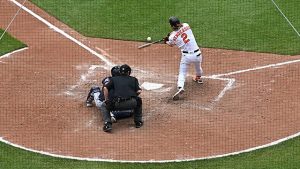
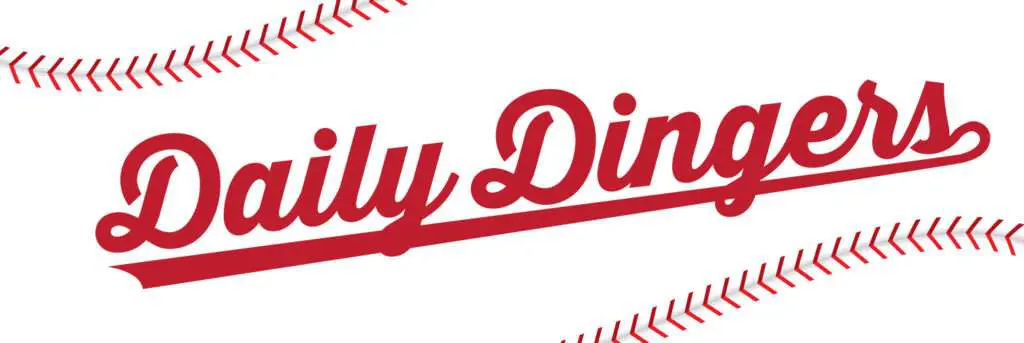
20 thoughts on “Most Home Runs in a Season in MLB History: The Top 48”
Comments are closed.